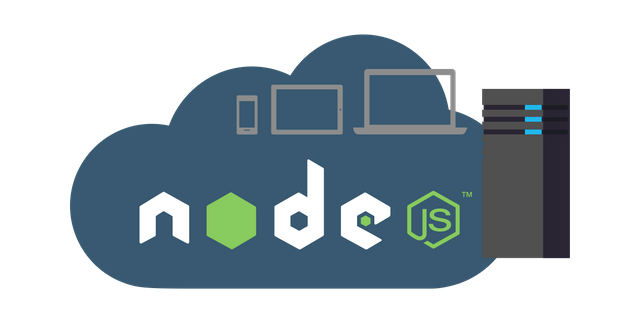[Translation][Spanish] Node.js, from English (1,565 words) [N'23]
Github Repository
https://github.com/nodejs/i18n
Project Details
By definition, Node.js is a Java Runtime Environment (JRE). But it is more than just that. While common JREs function as machine backups that allow users to smoothly run JavaScript on their browsers and applications, this open-source project functions as an app that manages Java code by itself. It's practical uses for developers are endless. It grants an extraordinarily versatile platform for designing code, programs, websites and other applications. And that isn't all: Node provides a virtual facility for testing the proper work of Java-driven programs and devices –and their planned updates–, helping to find bugs, solve errors, fix code and vastly improving their performance.
I believe all the amazing uses of Node are to be considered by themselves and I declare myself a fan of the project. But, besides, I support it for its functionality as a medium for bringing to reality countless creations that can be as good as Node itself. If you can dream it –and code it in JavaScript–, then your imagination is the only limit!The open translation of Node to thirty-three (33) languages proves the advantages of open-source projects when it comes to diversification of knowledge and worldwide spreading of useful tools.
Ahead, there is the link of the program's webpage:
Contribution Specifications
Translation Overview
This is my 23rd contribution to Node.js as a translator. For this collaboration, I continued my previous work on the CHANGELOG_IOJS.md file, which –as its name indicates– contains the changelog of the io.js’ version of Node.
As I explained in my past translation reports, a changelog is a registry of all the changes made on determined project for each one of its versions. The files created for such purpose list modifications on internal components, substitutions of protocols, updates, deprecations, addition of supported tools, new functions, corrected errors and fixed bugs. In summary: every feature that first appeared or was removed in the program version being addressed must be specified and described in this registry. This is made with the purpose of providing a timeline of the development of the project and, by doing so, helping programmers to check any details they need to understand the way it came to be what it is and improve it in the future.
I'll refer to two of the logs I translated to illustrate the dynamics of the changelog. Both of them are included in the "Commits" section of the addressed file. The first one goes:
There are two important concepts involved in this log. Being able to understand it requires that we address each of them particularly.
The first one is "OpenSSL". OpenSSL is one of the more versatile components that Node relies on. It is a free software that serves as a toolkit for the proper working of Transport Layer Security (TLS) and Secure Sockets Layer (SSL) protocols. It was firstly launched in 1998 and, due to the heavy widespread of the aforementioned protocols and increasing interest of online collaborators, got constantly updated until today, being its last version from november 20th, 2018 (just eighteen days ago).
The second one is "signing". In cryptography (as it is referred in this commit), digital signature is a virtual security method that contrasts public and private keys of servers to authenticate the messages that flow through them. This practice prevents the falsification of messages and the unwanted prying of information by unknown third parties.
This painting depicts the signing of the Declaration of Independence of the United States... But... Also... Could be a representation of the signature of messages within Node. These gentlemen would be, then, the cryptographic tools of Node... Clever... I know...
Once that is clarified, we can understand that this commit seeks to ensure that the integrated cryptographic tool of Node.js checks out if there are errors in OpenSSL at the time of using it to sign information that is passed in the application processes, preventing common errors and leaks of information.
The second log I'll refer is this:
As simple as it might sound, this commit suggests the updating of the Federal Information Processing Standard Standard (FIPS) text within the general Read me document of Node. FIPS was originally created in 2003 and is kept up to date with all the major changes in informatics and legislation as they occur. The purpose of these rules is to guarantee the safety of the cryptographic modules that adheres to them and, by that, the safety and privacy of the information of the users that require them.
Even though (ignoring how smiley is the guy from the picture above), there are certain concerns about the real degree of security provided by these specifications and their impact in the performance of computers.
You can check some references here for more information about the previously addressed concepts:
- https://www.openssl.org/
- https://github.com/openssl/openssl
- https://es.wikipedia.org/wiki/OpenSSL
- https://www.adwebtech.com/signing-encryption/
- https://en.wikipedia.org/wiki/Digital_signature
- https://searchsecurity.techtarget.com/definition/digital-signature
- https://whatis.techtarget.com/definition/FIPS-Federal-Information-Processing-Standards
- https://en.wikipedia.org/wiki/FIPS_140-2
All changes included in each one of the versions of the project are formatted as pull-request commits. Id est, they are presented as very brief comments about the action that was suggested, are normally written with imperative verbs, and have a strict limitation on their number of characters (so even complex ideas are reduced to a small amount of words). These specifications made the translation of this document a challenge. However, it was satisfactorily achieved. As you will see in the examples below, the name of the developer who provided each log is often referred inside parenthesis at the end of it.
Work example #01:
English:
[<0>6a16368611</0>] - <1>crypto</1>: fix memory leak in PublicKeyCipher::Cipher (Karl Skomski) <2>#2375</2>
Spanish:
[<0>6a16368611</0>] - <1>crypto</1>: corregir fuga de memoria en PublicKeyCipher::Cipher (Karl Skomski) <2>#2375</2>
Work example #02:
English:
[<0>e76822f454</0>] - <1>doc</1>: multiple documentation updates cherry picked from v0.12 (James M Snell) <2>#2302</2>
Spanish:
[<0>e76822f454</0>] - <1>doc</1>: múltiples actualizaciones de documentación a las que se les hizo cherry-pick desde la v0.12 (James M Snell) <2>#2302</2>
Work example #03:
English:
[<0>e51f90d747</0>] - <1>test</1>: option to run a subset of tests (João Reis) <2>#2260</2>
Spanish:
[<0>e51f90d747</0>] - <1>test</1>: opción para ejecutar un subconjunto de pruebas (João Reis) <2>#2260</2>
Languages
This translation was made from English to Spanish.
I got plenty experience translating and proofreading this project as an Utopian contributor. I collaborate here as translator and Language Moderator of the Da-Vinci/Utopian Spanish translation team. Besides this project, I have experience translating and proofreading The Curious Expedition, Ancap-ch, Byteball Wiki, OroCrm and BiglyBT.
Word Count
- The amount of words translated in this contribution is: 1,565.
- The total amount of words translated in this project (as a Da-vinci/Utopian translator) is: 25,645.
Previous Translations of the Project
- Contribution N'01. Submitted on September 13th, 2018.
- Contribution N'02. Submitted on September 15th, 2018.
- Contribution N'03. Submitted on September 17th, 2018.
- Contribution N'04. Submitted on September 19th, 2018.
- Contribution N'05. Submitted on September 21th, 2018.
- Contribution N'06. Submitted on September 22th, 2018.
- Contribution N'07. Submitted on September 23th, 2018.
- Contribution N'08. Submitted on October 1st, 2018.
- Contribution N'09. Submitted on October 8th, 2018.
- Contribution N'10. Submitted on October 14th, 2018.
- Contribution N'11. Submitted on October 15th, 2018.
- Contribution N'12. Submitted on October 18th, 2018.
- Contribution N'13. Submitted on October 21st, 2018.
- Contribution N'14. Submitted on October 24th, 2018.
- Contribution N'15. Submitted on October 27th, 2018.
- Contribution N'16. Submitted on October 31th, 2018.
- Contribution N'17. Submitted on November 3rd, 2018.
- Contribution N'18. Submitted on November 4th, 2018.
- Contribution N'19. Submitted on November 6th, 2018.
- Contribution N'20. Submitted on November 17th, 2018.
- Contribution N'21. Submitted on November 24th, 2018.
- Contribution N'22. Submitted on December 7th, 2018.
Proof of Authorship
This translation was made between December 8th and 11th, 2018. You can check the translation record in my Crowdin account [here], the activity on the project's Crowdin [here] and a summary of recent additions to the project [here].


Hi @alejohannes,
Hurray! This is your 23rd contribution to Node.js!
This is a very interesting project that contains many code values and terms related to computer science. Its difficulty relies on the fact that we must pay a lot of attention to the code in order to deliver the most accurate translation possible.
You did a great job with your presentation post, it is well written and formatted. It also includes all the basic details, as well as your personal feedback. Thank you for sharing clear and precise concepts you learned while working on this contribution in such a fun and dynamic way.
You delivered an accurate translation. You used the correct vocabulary and you were careful with code values that should not be translated in order to make sure the text keeps its true meaning.
Keep up the good work!
Your contribution has been evaluated according to Utopian policies and guidelines, as well as a predefined set of questions pertaining to the category.
To view those questions and the relevant answers related to your post, click here.
Chat with us on Discord
Thank you for your review, @marugy99! Keep up the good work!
Hi @alejohannes!
Your post was upvoted by @steem-ua, new Steem dApp, using UserAuthority for algorithmic post curation!
Your post is eligible for our upvote, thanks to our collaboration with @utopian-io!
Feel free to join our @steem-ua Discord server
Congratulations @alejohannes! You have completed the following achievement on the Steem blockchain and have been rewarded with new badge(s) :
Click here to view your Board of Honor
If you no longer want to receive notifications, reply to this comment with the word
STOPIf you are planning to have a digital signature, click here: online digital signature
Hey, @alejohannes!
Thanks for contributing on Utopian.
We’re already looking forward to your next contribution!
Get higher incentives and support Utopian.io!
Simply set @utopian.pay as a 5% (or higher) payout beneficiary on your contribution post (via SteemPlus or Steeditor).
Want to chat? Join us on Discord https://discord.gg/h52nFrV.
Vote for Utopian Witness!